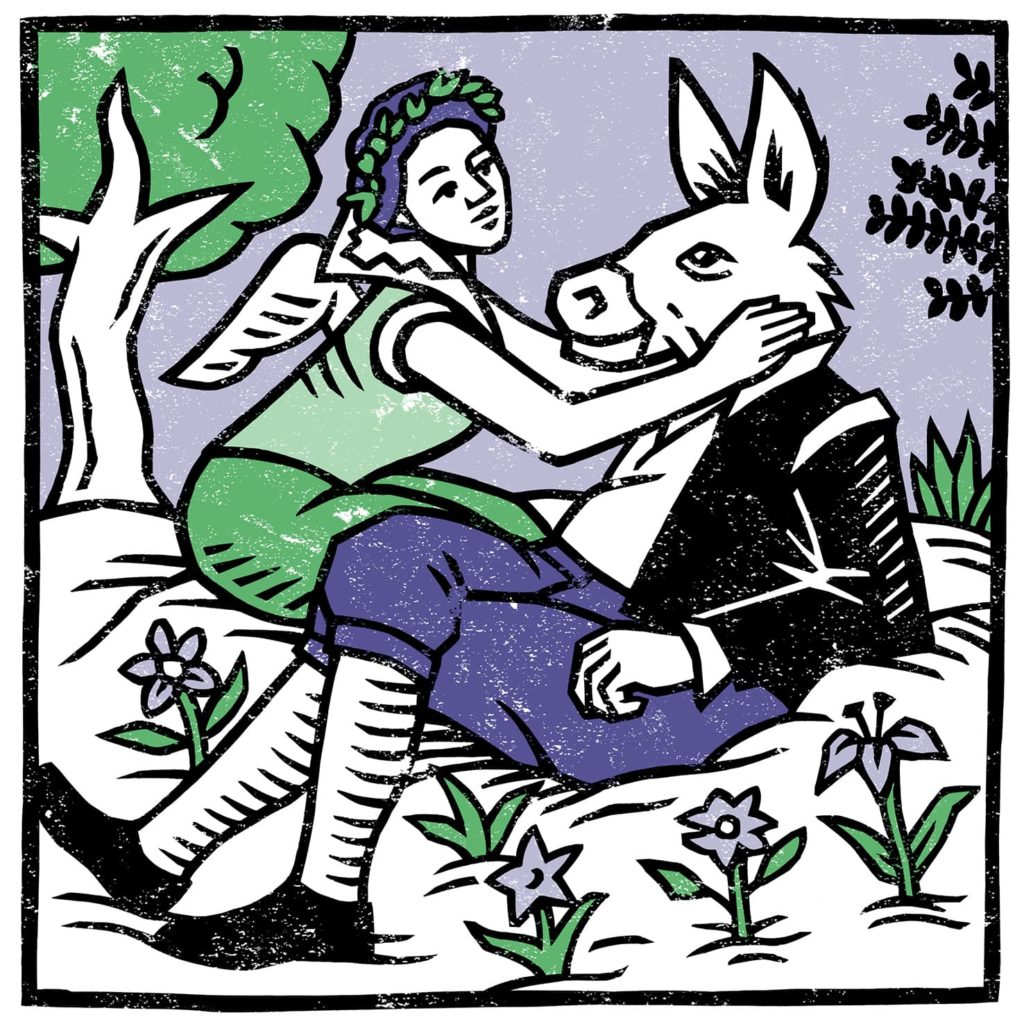In 1598, the play is mentioned by Francis Meres in a list of Shakespeare’s works. Scholars suggest its style dates it to 1595–1596.
The play was first printed as a quarto in 1600, probably typeset from a final-draft manuscript by Shakespeare. A second quarto, typeset from the first, was printed in 1619. The First Folio version was based mainly on the second quarto, with amendments – made from the acting company’s prompt-book – possibly overseen by Heminge and Condell.

‘Come, sit down upon this flowery bed
While I thy amiable cheeks do coy,
And stick musk roses in thy sleek, smooth head,
And kiss thy fair large ears, my gentle joy.’
A Midsummer Night’s Dream, IV i
Brief synopsis of the play
Hermia disobeys Theseusʼs command that she should marry Demetrius. She elopes with Lysander to the enchanted forest outside Athens. Hermiaʼs friend Helena (herself in love with Demetrius) reveals their plan to him, and they follow. Over a summer night, the worlds of the lovers, fairies (the quarrelling King Oberon and Queen Titania, and the subversive Puck), and a bumbling group of amateur actors collide spectacularly in this magical, funny and inventive comedy.



